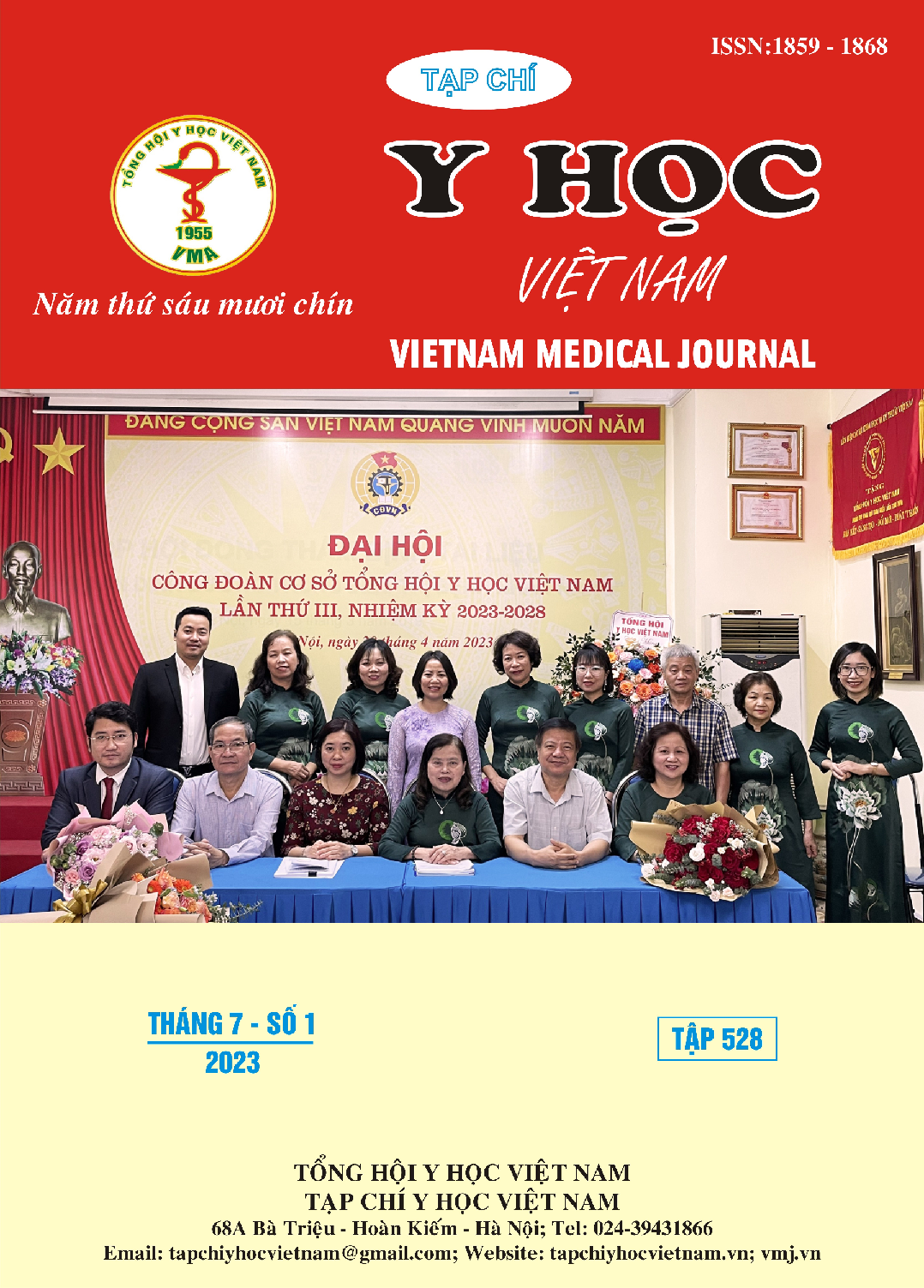COMPLICATIONS RELATED TO PERIPHERAL VENOUS CATHETERIZATION IN NEONATES AT NEONATAL DEPARTMENT - VINMEC TIMES CITY INTERNATIONAL HOSPITAL IN 2022 – 2023
Main Article Content
Abstract
peripheral venous catheterization in neonates at Neonatal Department - Vinmec Times City International Hospital in 2022 - 2023. Subjects and methods: A cross-sectional study on 150 neonates admitted to the hospital from 01 August 2022 to 23 February 2023 at the Department of Neonatology - Vinmec Times City International General Hospital with peripheral venous catheters placed at the department. Results: 72.7% of children were hospitalized on the first day after birth. The rate of boys is 67.3% and girls is 32.7%, the average weight of the children on admission was 3038.8 ± 795.0g; The main diseases of the study subjects were neonatal infections (64%) and respiratory failure (60%). The mean number of intravenous needle retentions was 2.1/child, mainly 2 times (accounting for 41.6%). The rate of transmission line with complications accounted for 20.8%, of which permeation/extravascularity accounted for the highest proportion with 15.7% (mainly level 1 accounted for 77.6%; level 2 accounted for 18.4 and Grade 3 accounted for 4.0%; followed by phlebitis complication rate 3.2% (all were grade I); pressure ulcer complications accounted for 1.9% (all of them were grade I) and none of the infusion lines have complications of sepsis. Conclusion: Newborns with peripheral venous catheters had a complication rate of 20.8%. The rate complication of permeation/extravasation was the highest with 15.7%; followed by phlebitis complications accounting for 3.2%; Complications of pressure ulcers at the site of venous drainage accounted for 1.9% and none of the infusion lines had complications of sepsis.
Article Details
Keywords
neonate, catheter, complications, vein, peripheral, phlebitis, Infiltration/ Extravasation, Pressure Ulcer.
References
2. M. Suliman, W. Saleh, H. Al-Shiekh, W. Taan, and M. AlBashtawy, "The Incidence of Peripheral Intravenous Catheter Phlebitis and Risk Factors among Pediatric Patients," J Pediatr Nurs, vol. 50, pp. 89-93, Jan-Feb 2020.
3. B. v. Đ. K. h. B. Vì, "Đánh giá tình trạng lưu kim luồn tĩnh mạch ngoại biên trên những bệnh nhân nội trú tại khoa Nhi, Bệnh viện Đa khoa huyện Ba Vì năm 2014," 2015.
4. M. T. Danski, P. Mingorance, D. A. Johann, S. A. Vayego, and J. Lind, "Incidence of local complications and risk factors associated with peripheral intravenous catheter in neonates," Rev Esc Enferm USP, vol. 50, pp. 22-8, Feb 2016.
5. M. Dufficy, M. Takashima, J. Cunninghame, B. R. Griffin, C. A. McBride, D. August, et al., "Extravasation injury management for neonates and children: A systematic review and aggregated case series," J Hosp Med, vol. 17, pp. 832-842, Oct 2022.
6. M. Legemaat, P. J. Carr, R. M. van Rens, M. van Dijk, I. E. Poslawsky, and A. van den Hoogen, "Peripheral intravenous cannulation: complication rates in the neonatal population: a multicenter observational study," J Vasc Access, vol. 17, pp. 360-5, Jul 12 2016.
7. J. Pettit, "Assessment of the infant with a peripheral intravenous device," Adv Neonatal Care, vol. 3, pp. 230-40, Oct 2003.
8. A. C. R. Gomes, C. A. G. d. G. Silva, Carmen Justina, J. C. d. O. Faria, A. F. M. Avelar, and E. d. C. Rodrigues, "Assessment of phlebitis, infiltration and extravasation events in neonates submitted to intravenous therapy," J Escola Anna Nery, vol. 15, pp. 472-479, 2011.


